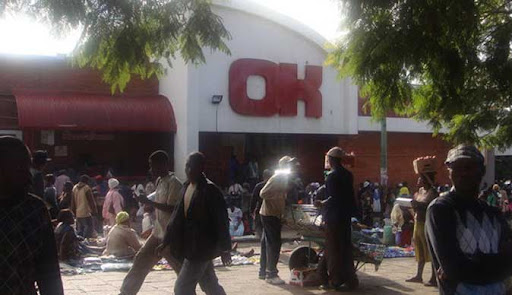The South African government has committed to an aggressive program of economic reform to reignite its stalled economy. President Cyril Ramaphosa's new deal for banks and corporates offers renewed dynamism, growth and stability. Financial inclusion is a key enabler of sustainable economic and social development. SA's banking system is consistently rated one of the most advanced and well-functioning in the world. That said, only 58% of the adult population have a formal bank account.
Glaring gaps in the financial landscape
The bulk of mobile phones in Africa are feature phones and the Unstructured Supplementary Service Data or USSD channel provides functionality that is quick, safe and easily accessible from all mobile phones. To date, it is the most widely adopted technology for financial services in emerging markets and the lower end of the market.
In South Africa, smartphone penetration has passed the one-third mark to anywhere between 37% and 45%. As smartphones become more affordable, so will the popularity of app-powered platforms as a channel for financial services. However, until there's a smartphone in every pocket – backed by affordable data – banks, FinTechs and Mobile Network Operators (MNOs) are reliant on USSD gateways to reach the unbanked market.
Changing customer behaviours and the need for convenience and affordability are evident in SA's e-commerce boom. Yet, many are excluded from the online marketplace due to high data costs, the fear of fraud and lack of alternative payment methods. It is argued that banks cannot effectively service all segments of the market. More digital platforms, low-cost mobile banking and point-of-sale solutions are needed to meet changing consumer needs.
Non-traditional and sector-specific financial service providers are realising the growth potential of integrated banking solutions as part of their industry supply chain. By leveraging existing customer bases, low-cost models and distribution channels, new players are entering the market with more convenient, affordable and personalised solutions - even extending to areas where traditional banks have little presence.
Ongoing transformation of banks
While 90% of banking executives believe that change is accelerating towards digital banking ecosystems, only 12.9% say their core systems can support this movement. The prospect of losing ground to new market entrants are compelling banks to innovate through strategic and collaborative FinTech partnerships.
The IT and data transformation project timelines of established banks often extend 5-10 years but the agility of new market entrants is forcing banks to launch products and new features much faster. FinTechs like WIZZIT International can bridge the gap between legacy and agility with customisable, cost-effective and easy-to-integrate solutions that can be implemented in a matter of weeks.
With the rapid rise of Internet and mobile penetration, the stage is set for the adoption of digital and mobile financial services. Breakthrough FinTech innovations like Mobile Banking, Mobile Wallets and Virtual Card are enabling financial inclusion and closing gaps in the financial landscape. It also opens the door for online shopping to flourish by alleviating traditional online shopping barriers like the fear of fraud and access to limited payment options.
Here's how banks can stay relevant and secure sustainable growth.
Accelerate transformation
Banks can operate more cost-effectively and become fit for growth by investing in digital transformation and implementing emerging technologies that can revolutionise costly legacy systems.
Develop digital platforms
The shift to digital channels is essential to meet customers' evolving approach to banking. In response, banks have to launch and refine digital mobile-first platforms to enhance operations and improve the customer experience. The focus should be on tailored offerings and improved on-boarding tools and channels.
Tailored solutions through big data and analytics
Big data and analytics can provide deep insights into customer profiles and changing behaviours which will result in tailored offerings, targeted cross-selling and effective retention strategies.
The financial landscape is evolving swiftly, as are customer expectations and digital innovations. Despite rapid technology advancements, banks have been slow to evolve. In partnership with FinTechs, banks can bridge the gap and exceed customer expectations with value-add solutions – whenever and wherever there's a mobile phone in the pocket.
- Agencies
 OK Zimbabwe posts US$17,8 million loss
OK Zimbabwe posts US$17,8 million loss  Hichilema meets Chivayo
Hichilema meets Chivayo  Millions celebrate Diwali festival in India
Millions celebrate Diwali festival in India  Econet Zimbabwe to delist from ZSE
Econet Zimbabwe to delist from ZSE  Gold edges up as traders await guidance
Gold edges up as traders await guidance  Mnangagwa fires Chitando, appoints Polite Kambamura
Mnangagwa fires Chitando, appoints Polite Kambamura  Young Investment Professional (YIP) Graduate Programme 2019
Young Investment Professional (YIP) Graduate Programme 2019 











 Young Investment Professional (YIP) Graduate Programme 2019
Young Investment Professional (YIP) Graduate Programme 2019
Editor's Pick